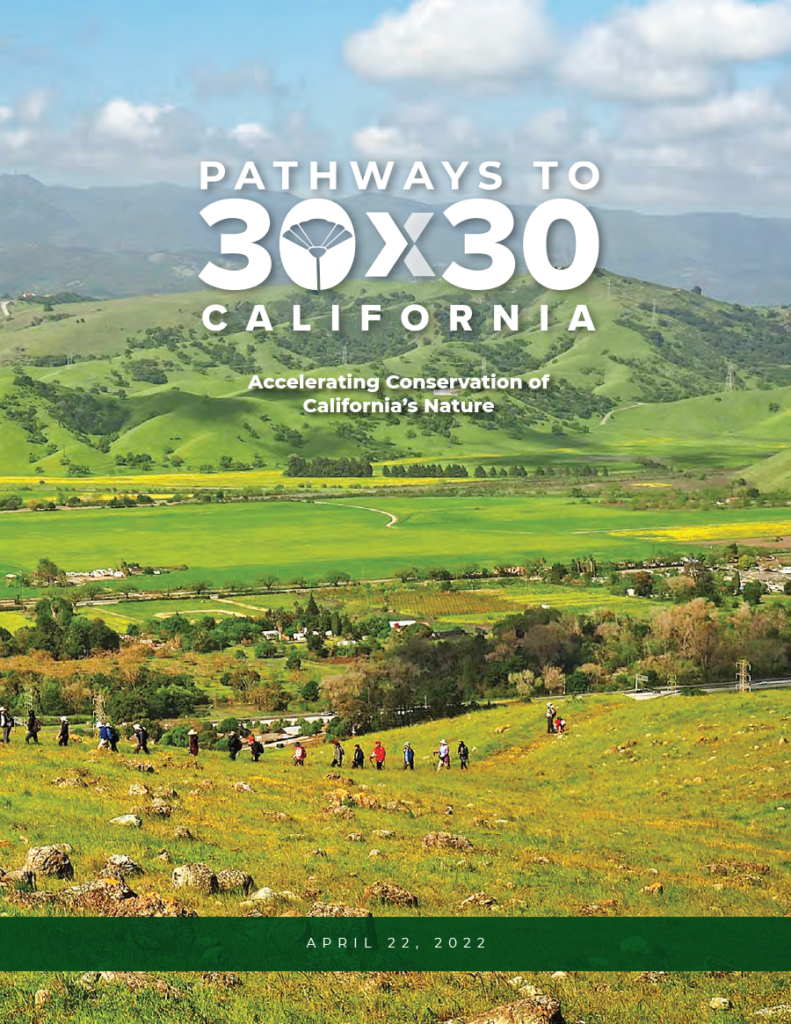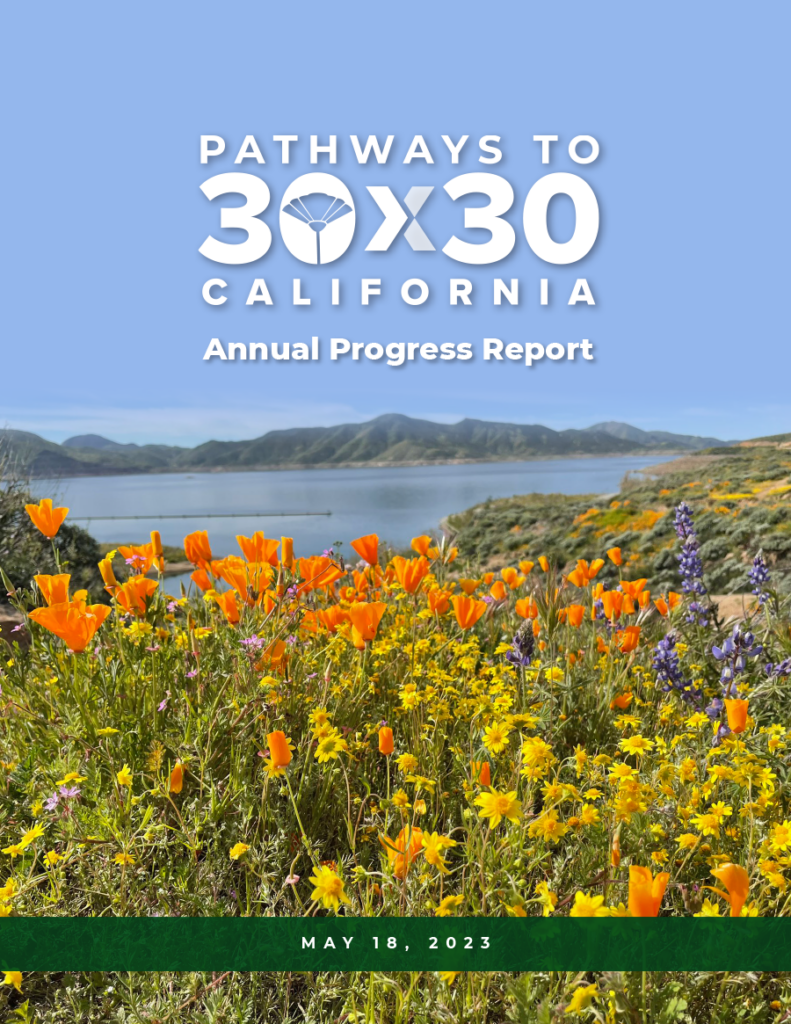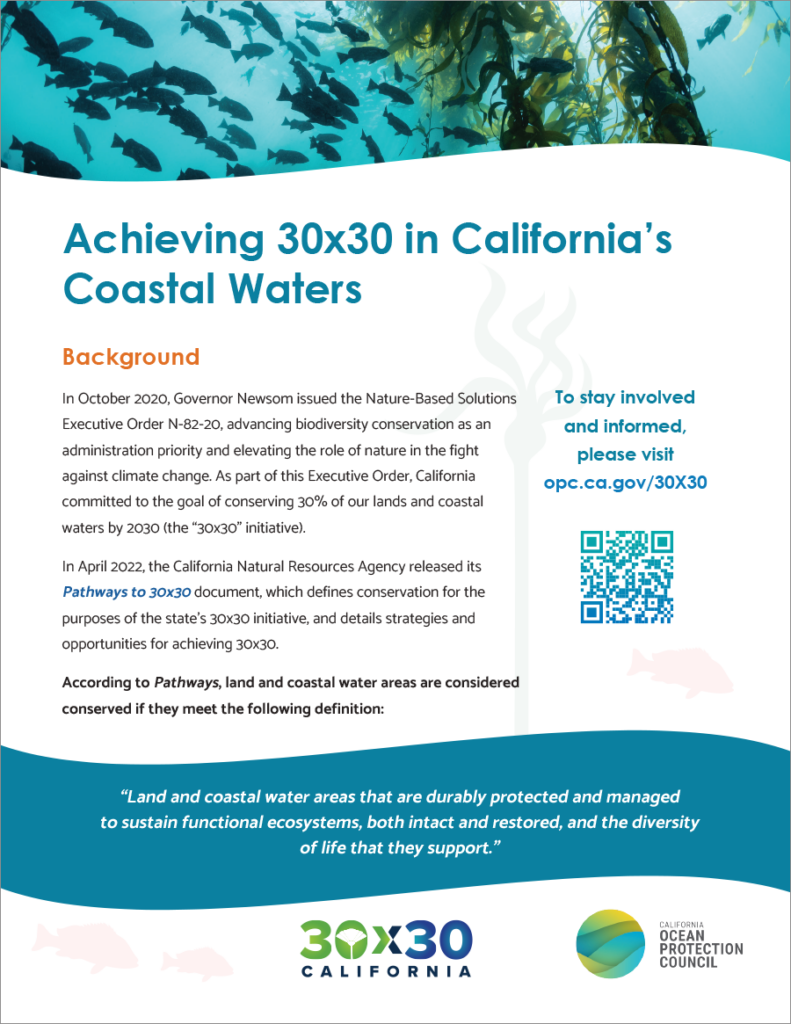Pathways to 30×30 Annual Report Highlights Progress on California’s 30×30 Initiative
Last week, the California Natural Resources Agency released its Pathways to 30×30 annual progress report. The findings in this report demonstrate tangible, meaningful progress toward our state’s 30×30 goal – just one year after the release of Pathways to 30×30, our state has conserved an additional 631,000 acres of lands and identified concrete strategies to strengthen conservation in coastal waters. As of May 2023, 24.4% of California’s lands and 16.2% of its coastal waters can be considered conserved.
OPC is leading implementation of the 30×30 initiative for coastal waters, and we are proud of the considerable advancements we’re making this year:
-
Adaptively Managing Our State’s Marine Protected Area (MPA) Network
In January 2023, the California Department of Fish and Wildlife released the first Decadal Management Review of California’s statewide network of 124 MPAs. This groundbreaking report provides compelling scientific evidence that, in many cases, MPAs are working to improve ocean health. It also provides recommendations for managing the MPA network into the future. Public meetings this past spring, and continuing in July, are providing venues for members of California’s diverse ocean communities to weigh in on the results of the Decadal Management Review and express their priorities for adaptive management. -
Enhancing Conservation in National Marine Sanctuaries
The Greater Farallones National Marine Sanctuary is currently in the process of updating its management plan, and this year, OPC began working closely with Sanctuary leadership to align the new management plan with the state’s 30×30 initiative. State and federal managers will now work together with local tribes, fishing communities, conservation organizations, and other Sanctuary stakeholders to identify top threats to biodiversity within the Sanctuary, such as whale ship strikes and kelp loss, and collaboratively develop conservation measures that address these threats. -
Supporting Tribally-led Conservation Through Indigenous Marine Stewardship Areas
Tribally-led conservation is key to the success of 30×30 in California, and OPC envisions Indigenous Marine Stewardship Areas as a way for tribes to lead coastal conservation action in their ancestral territories. OPC is currently preparing to conduct tribal consultations and listening sessions to further develop this concept in collaboration with tribal governments. - Exploring the Role of Other Effective Conservation Measures
In April 2023, OPC convened a scientific workshop to develop a comprehensive inventory of spatial management measures in California state waters apart from MPAs and National Marine Sanctuaries, such as areas created to protect water quality or maintain sustainable fisheries. This inventory is an important first step in evaluating which of these areas may contribute to the 30×30 goal. In the coming weeks, this inventory will be released for public comment, and OPC will begin working with academic partners to develop science-based criteria for assessing the durability and biodiversity benefits of these areas.
OPC is committed to meaningful collaboration with partner agencies, tribes, and California’s coastal communities – including fishermen, environmental justice organizations, and conservation groups – as we move forward with each of these key approaches. This year, we launched a dedicated 30×30 webpage and created a public-facing, shareable fact sheet that provides details on our approach to 30×30 and answers to frequently asked questions. We have also held three virtual workshops to share details on our strategies and solicit feedback; these workshops were attended by hundreds of coastal stakeholders from across the state and are directly informing our efforts.
As excited as we are about the progress we’ve made in this past year, we know there is much work yet to do. This coming year, we will strengthen and expand our communications and outreach efforts. We will identify and launch new projects to address scientific knowledge gaps. And we will begin consultations with California Native American tribes to ensure that tribal voices are elevated and prioritized in our work. All of this will support a science-based, community-informed approach to achieving 30×30 in coastal waters.
Because the ocean is a resource that belongs to all Californians, 30×30 will look different in coastal waters than it does on land. But OPC is committed to upholding the spirit of 30×30 – a movement truly by and for us all. The Pathways annual report is an exciting milestone. Let’s take a moment to celebrate all that we’ve achieved together, and then get back to the work ahead!




